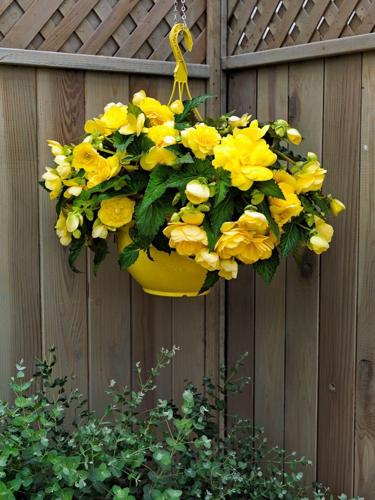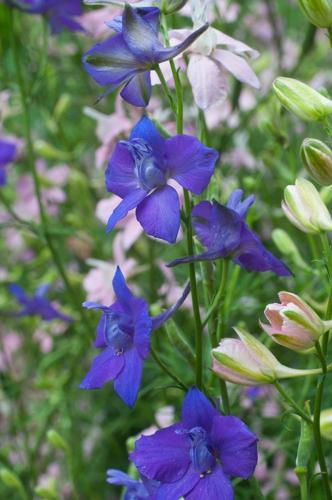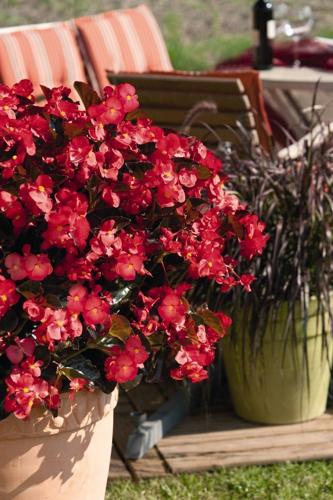For 2016, the gardening industry wants you to think about carrots, begonias, delphiniums and alliums.
These are the newest selections for “The Year of the ... ”, an annual campaign by the National Garden Bureau Inc. to focus publicity on certain plants.
Every year, the bureau, which is “the marketing arm of the gardening industry,” according to its website, selects an edible, bulb crop, annual and perennial.
Not all its selections are going to work in the Sonoran Desert, so here’s what local gardening experts have to say about the 2016 picks.
CARROT
Growing carrots in Tucson is an exercise in patience, says urban farmer Lorien Tersey.
“Carrots take a long time,” says Tersey, who sells her crops at farmers markets. “You have to ignore them.”
Carrots have a goofy planting season here. Some folks like to sow carrot seeds in August and September to harvest in late fall.
Tersey feels a fall harvest yields carrots “on the skinny side.”
She prefers continual planting between December and February. The root slowly grows in the cold, then takes off when spring warming occurs.
In Tersey’s opinion, carrots planted any earlier go through a fall growth spurt, winter dormancy and then another growth spurt that may cause the plant to flower early in spring.
That makes the carrot “tough and woody,” she says.
Winter-planted carrots should be harvested by July. She digs around the top of the root to “see how fat they’re getting” and decides then whether to pull it out.
She particularly likes “Danvers Half Long” and “Scarlet Nantes” (also called “Nantes Half Long”) varieties for local growing conditions. Half longs, in particular, grow well in shallow soil.
Other good choices include “Red Cored Chantenay” suggested by the Pima County Cooperative Extension and “Dragon” sold at Native Seeds/SEARCH.
BEGONIA
Begonia varieties abound, but for newbie growers in Tucson, garden center owner Cathy Bishop recommends starting with the wax begonias.
“Those are by far the easiest ones,” says Bishop, owner of Mesquite Valley Growers Nursery. “Because of our climate, they don’t realize that they’re an annual. We are able to keep them for more than just one season and ... more than one year.”
Begonias are not frost-hardy, but they can survive freezing Tucson winters if they are protected on a patio, under an overhang or with frost cloth.
With the right care, gardeners are rewarded with leaves ranging in color from green to rust to maroon and small multipetaled flowers of red, pink or white.
For the more adventuresome, there are two other types of begonias to try.
Fibrous begonias grow from rhizomes, an underground stem that grows both roots and shoots. Other rhizome plants include iris, canna, ginger and potato.
These begonias are grown as much for their spectacular leaves as for their flowers, Bishop says. They come in different shapes, colors and patterns.
Bishop says fibrous begonias are the second-hardiest for the desert climate.
“Their little rhizomes help them hold water,” she says.
Mesquite Valley has grown tuberous begonias, a specialty plant not recommended for the casual gardener.
A summer grower, tuberous begonias need a lot of attention, starting with making sure the bulb is planted at just the right depth in very good soil.
“You want to water them well, but want the soil to drain entirely,” says Bishop.
They need the right balance of humidity, shade and sun. Bunching them with other plants helps provide the needed humid micro-climate.
Filtered light will help them avoid sunburn.
DELPHINIUMS
Long spikes covered in blue, lavender, pink or white flowers make delphiniums a showy addition to a country garden, says the National Garden Bureau.
Delphinium is usually included in wildflower seed mixes for country gardens, says Tom Lash, a landscape manager for Harlow Gardens.
The perennial doesn’t last long in the desert summer, however, which is why the related larkspur is more suitable here.
There are several species of wild larkspur in Arizona, including barestem and Wooton plains, that emerge as spring wildflowers.
“You get the same gorgeous blue flowers,” Tersey says, “but the individual flower stalks (of larkspur) are more slender and less fluffy.”
Larkspur can be found in some desert seed mixes, including the cut flower wildflower mix offered by Native Seeds/SEARCH.
Harlow Gardens sells both delphiniums and larkspurs in season, says Lash.
Both plants require a “well-maintained perennial bed” or pot with dark soil, he says.
Sow seeds in October or November. With regular watering “they give you a nice spring show,” he says.
By midsummer, they die back, but another bloom can emerge in early fall after a good soaking from monsoon rains.
Like delphinium, larkspur is poisonous to humans and animals, says Tersey.
ALLIUM
Ornamental allium, which has a leafless stem topped with a puffball of flowers, do terribly in the Sonoran Desert’s low humidity.
“When it dries out in the summer time, they’re very unhappy,” Lash says.
“Ornamental alliums do not like our hot soils,” says garden writer and botanist Jacqueline Soule, who says they can survive in dense shade, however.
Local landscapers and gardeners have better luck with hardier edible alliums, which includes onion, leek and garlic.
Lash likes to use society garlic as an ornamental in local landscapes. From what looks like a clump of long-blade grass rise bare stalks topped with loose clusters of lavender or blue flowers.
Tersey likes elephant garlic, which sports the same globular blooms as ornamental allium.
Soule says garlic chives are among the hardier allium species and is drought and cold tolerant. Stems of small baby blue flowers emerge among the blades.






